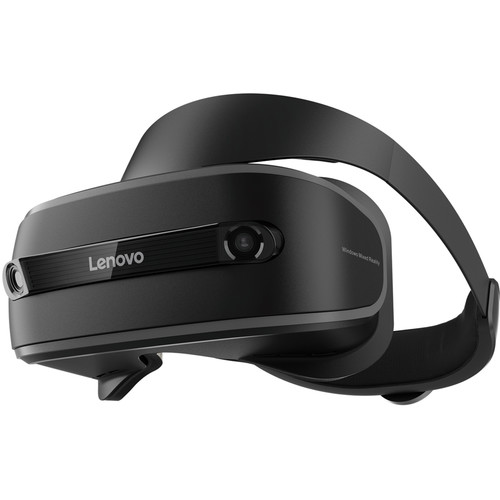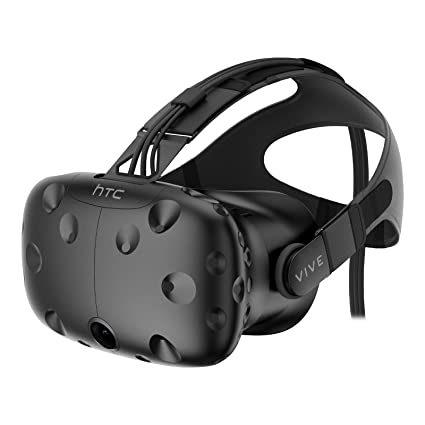HTC VIVE vs Lenovo Explorer
When you compare the Lenovo Explorer to the HTC VIVE you can see which VR Headset is better. Let's take a look of the comparison, and see which model of VR Headset out ontop.
What VR Headset is better?
When it comes to virtual reality headsets, the Lenovo Explorer and HTC VIVE are two of the leading brands in the industry. Both offer a wide range of features and specs, but which one is right for you? Let’s take a look at how they compare.
First, let's look at the specifications: The Lenovo Explorer has a 110-degree field of view with 2880x1440 resolution pixels and requires an Intel Mobile Core i5 Dual-Core with Hyperthreading and an Intel HD Graphics 620 (GT2) for optimum performance. It is compatible with Microsoft Windows operating systems, offers room scale and 360 tracking, and refreshes at 90Hz. Meanwhile, the HTC VIVE has similar specs but requires an Intel I5-4590 or AMD FX 8350 processor along with Nvidia GeForce™ GTX 1060 or AMD Radeon™ RX 480 graphics card.
Both headsets provide excellent visuals and fluid tracking capabilities, allowing users to immerse themselves in a variety of virtual reality experiences without experiencing lag or jittery frames. The higher resolution offered by the Lenovo Explorer provides greater detail when playing games or watching videos compared to its HTC counterpart. Furthermore, its lower CPU requirements make it easier for those with less powerful systems to access VR content without having to upgrade their hardware. On the other hand, if you have more powerful components already installed then either headset will perform admirably so long as your graphics card meets the minimum requirements needed for each product.
In terms of comfortability both models fit snugly on your head but I personally find that the foam padding on the Lenovo Explorer allows me to wear it for extended periods much more comfortably than its HTC counterpart thanks to its adjustable straps which help distribute weight evenly across my face reducing fatigue during use. However both can become uncomfortable after prolonged use especially if you have glasses like me!
Ultimately though I feel that overall due to its better specification options combined with superior comfortability Lenovo's offering would be my first choice if looking for a Virtual Reality Headset between these two products although depending on your system specification either headset will still provide you with great results as long as your computer can handle what is being asked of it!
Specs comparison between the two VR Headsets
| Lenovo Explorer | HTC VIVE | |
|---|---|---|
| Overview | ||
| Brand | Lenovo | HTC |
| Model Name | Explorer | VIVE |
| Release Date | 2017 | 2016 |
| Country of Origin | China | Taiwan |
| Category | PC VR | PC VR |
| Battery Life | 12 h | 2.5 h |
| Display | ||
| Field of View | 110° | 110° |
| Resolution | 2880 × 1440 px | 1080 × 1200 px (per eye) |
| Refresh Rate | 90 Hz | 90 Hz |
| Display Type | LCD | OLED |
| Minimum Requirements | ||
| Min. CPU Required | Intel Mobile Core i5 Dual-Core with Hyperthreading | Intel I5-4590 or AMD FX 8350 |
| Min. Graphics Required | Intel HD Graphics 620 (GT2) | Nvidia GeForce™ GTX 1060 or AMD Radeon™ RX 480 |
| Min. RAM Required | 8 GB | 4 GB |
| Operating Systems | Microsoft Windows | Microsoft Windows |
| Sizing | ||
| Weight | 380 g | 470 g |
| Dimensions | 185 × 95 × 102 mm | 199 × 122 × 122 mm |
| Features | ||
| Room Scale? | YES | YES |
| 360 Tracking? | YES | YES |
| Positional Tracking? | YES | YES |
| Front Camera? | YES | YES |
| Eye Tracking? | No | |
| Usable with Glasses? | YES | YES |
| Cooling System | No | No |
| Built in Headphones? | No | No |
| Built in Microphone? | No | YES |
| Flip Visor? | YES | YES |
| Voice Command? | YES | YES |
| IPD Adjustment? | YES | YES |
| Lens to Eye Adjustment? | YES | YES |
| USB? | YES | YES |
| MicroUSB? | No | |
| Display Port? | YES | YES |
| Mini Display Port? | No | |
| HDMI? | YES | YES |
| MicroSD? | YES | |
| Bluetooth? | YES | YES |
| Wifi? | YES | |

